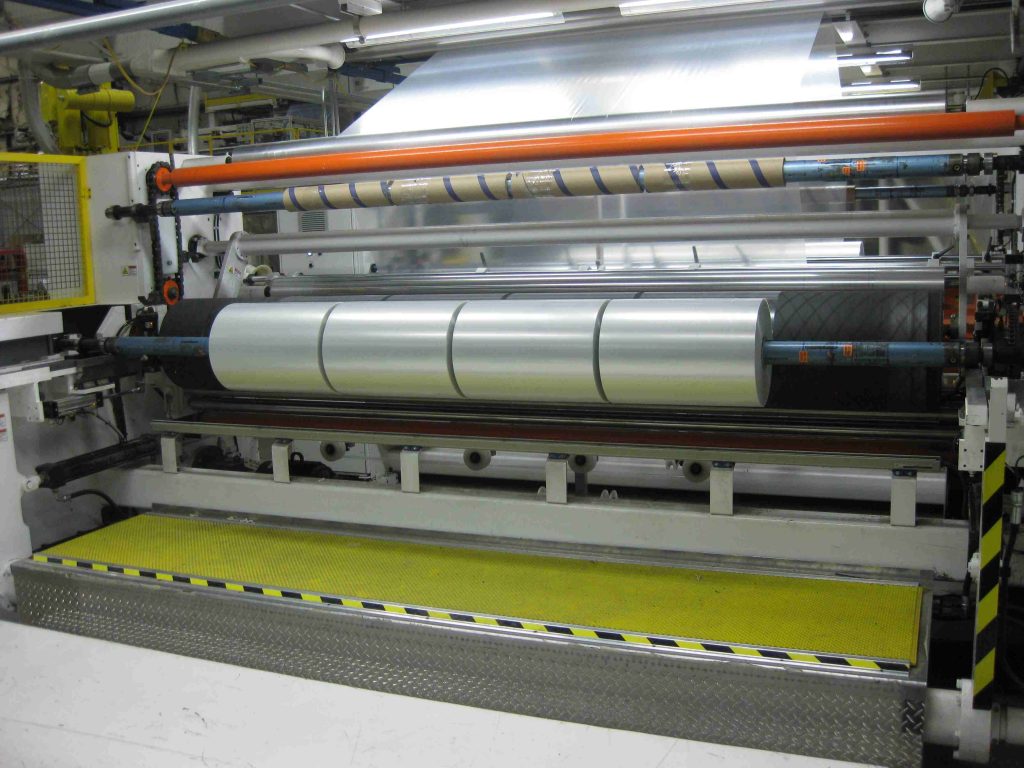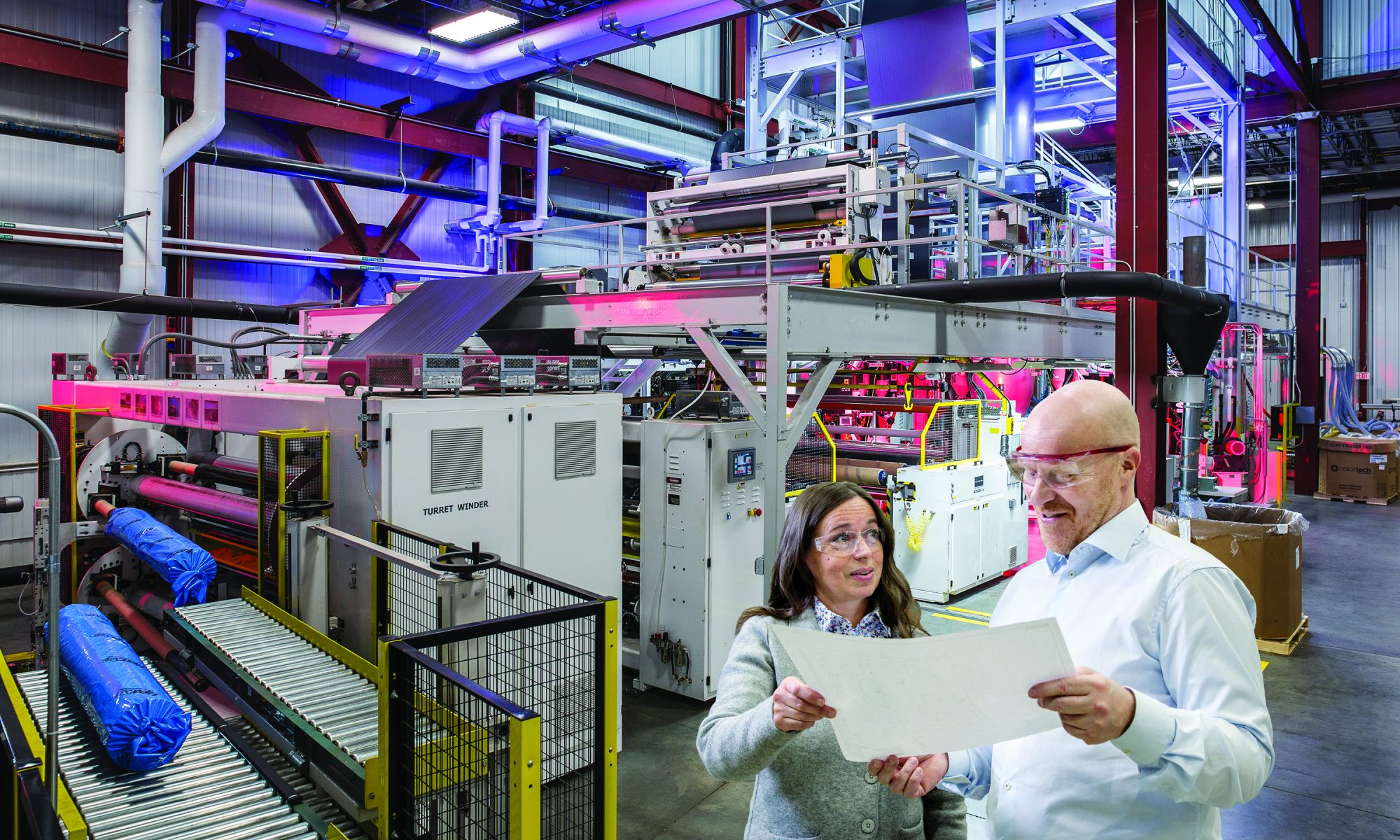
Welcome to the fourth blog of our winder series featuring the insight of our winding expert, Duane Smith.
In the last blog, we discussed the importance of TNT (Tension, Nip, Torque) in winding good rolls. In this blog, we’ll discuss the advantages and disadvantages of the three basic winding processes used for winding web materials. These are center winding, surface winding and a combination of center-surface winding. Each process uses one or more of the TNT winding principles to build roll hardness.
Center Winding
A center winder can be in the form of a gap winder where only Tension is used to control roll hardness. It could also incorporate a lay-on pressure roll, using both Tension and Nip to control roll hardness. With a center winding process, the spindle torque through the center of the roll provides the web tension.
Advantages of turret center winders:
-
-
- Best for winding soft rolls (e.g. webs with guage bands)
- Best for winding film with high tack
- Best for winding small diameter rolls
- Easily designed for dual-direction winding
- Able to provide adhesiveless transfers
- Quick indexing and fast cycle times
-
Disadvantages:
-
-
- Limited maximum roll diameter due to the torque applied through layers of slippery webs
- Higher profitability of generating scrap during roll changes
-
Surface Winding
When surface winding elastic materials, Tension is the dominant winding principle. When surface winding inelastic materials, Nip is the dominant winding principle. Surface-type winders use a driven winding drum to pull the winding tension. The winding rolls are nipped to the winding drum by apply loading through the shaft supporting the winding roll. With surface winding, torque is not applied through layers of web being wrapped into the roll.
Advantages of drum surface winders:
-
-
- Best for winding hard rolls (e.g. protective films)
- Best utilization of space and horsepower
- Best for winding very large diameter rolls
- Best for minimizing waste during transfers
- Single and smaller winding drive
- Generally less expensive
-
Disadvantages:
-
-
- Air can’t be wound into the roll to minimize gauge bands
- Wound Rolls can have blocking issues
-
Center-Surface Winding
A center-surface winder uses both center winding and surface winding processes. Center-surface winding uses all three of the TNT winding principles. Web Tension is controlled by the surface drive connected to the lay-on or pressure roll to optimize the slitting and web spreading processes. The feedback from the web tension load cells trims the drive to control constant web tension during the winding operation. The Nip is controlled by the lay-on roll loading applied to the winding roll. The Torque from the center drive can be adjusted to produce in-wound tension to achieve the desired roll hardness profile. Winding tension can also be independently controlled from the web tension. For high-tension applications, center-surface winders share tension horsepower requirements to allow small center drives.
Advantages of center-surface winders:
-
-
- Winding tension can be independently controlled from the web tension best for winding high-slip films to larger diameters
- Best for slitting and winding extensible films to larger diameters
- Best for tapering in-wound tension without affecting film width
- Able to supply in-wound tension without stretching the web over caliper bands
-
Disadvantages:
-
-
- More equipment and drives
- More complex to operate
-
Suggested Winding Process
-
- Center Winding Process
- Surface Winding Process
- Combo Center/Surface Winding Process
| Material Characteristics | Suggested Winding Process |
| Thin webs at high speeds | 1 Contact Mode |
| Thin non-extensible webs, small diameter | 1 Gap or Contact Mode |
| High coefficient “sticky” materials | 1 Gap Mode |
| Extensible “stretchy” webs, small diameter | 1 Gap or Contact Mode |
| Extensible “stretchy” webs, large diameter | 2, 3 |
| Thick webs wound to large diameters | 2, 3 |
| Inline slitting of multiple webs | 2, 3 |
| Thin non-extensible webs, large diameter | 3 |
| Low coefficient “slippery” materials | 3 |
We hope these guidelines help you wind the perfect roll.
Have questions regarding this post? Comment below.
Cheers,
The D-S Connect Blog Team
